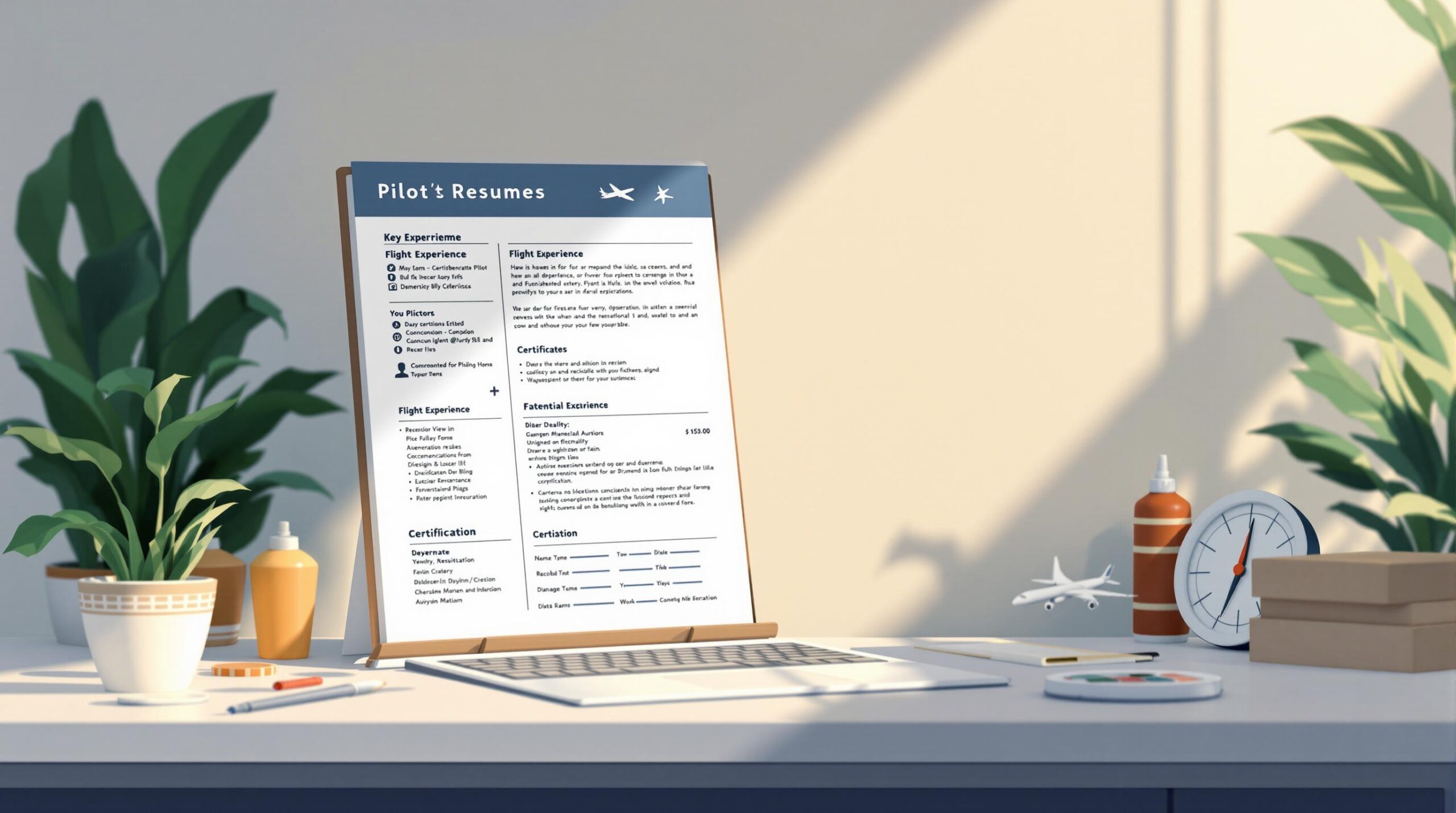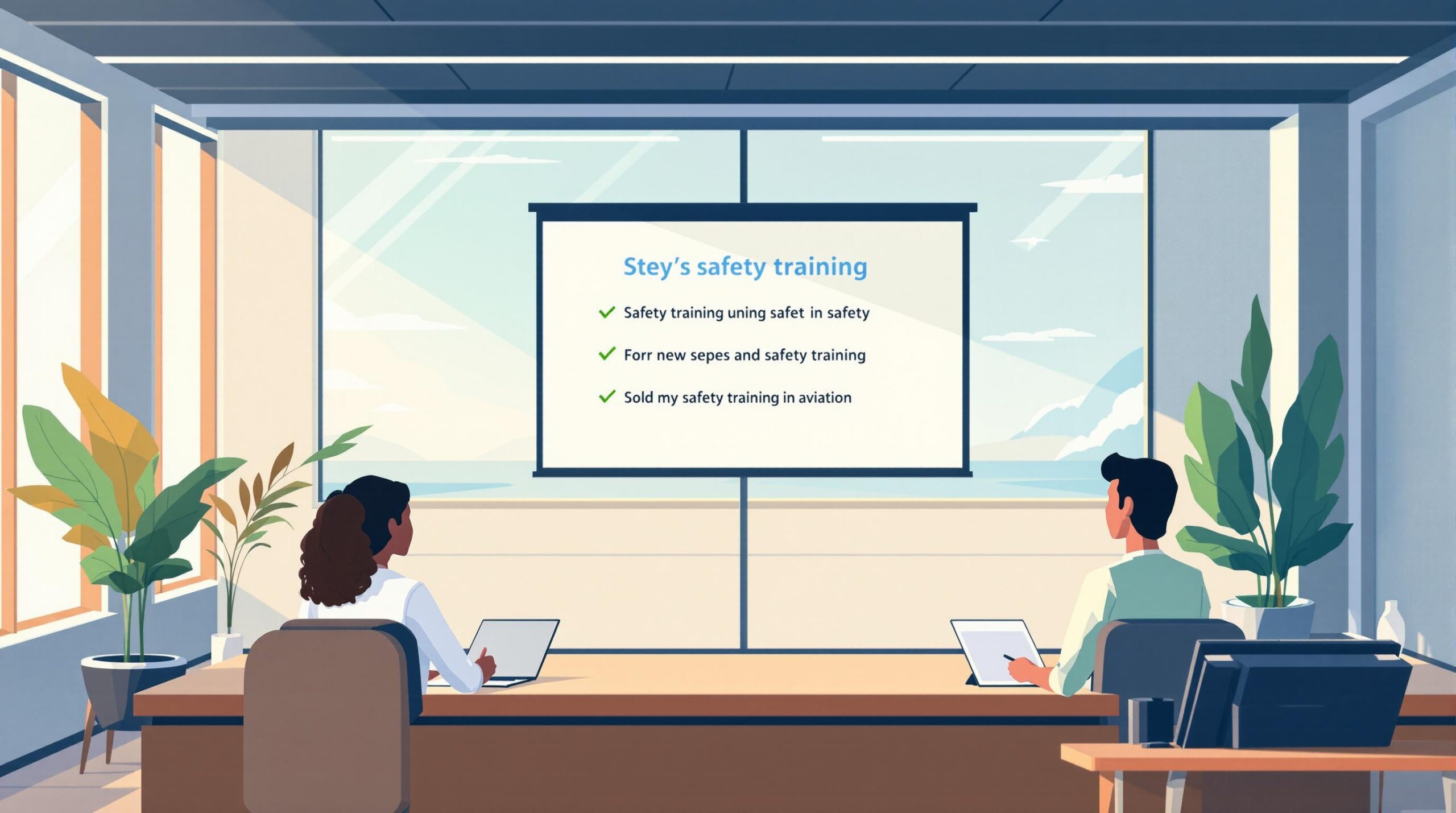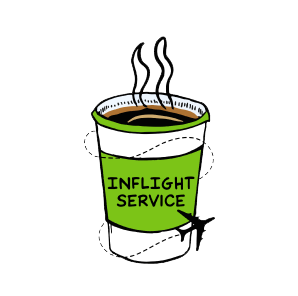Want to save time and money during flight training? Here’s how to make every hour count. Flight training can be expensive and time-consuming, but with the right strategies, you can progress faster, sharpen your skills, and control costs. This article breaks down 10 practical tips to help you maximize your flight training efficiency.
Key Takeaways:
- Set Clear Goals: Define specific objectives for each session using SMART goals.
- Prepare Thoroughly: Study lesson materials, review weather, and use simulators before flights.
- Stay Flexible: Adjust plans for weather or instructor availability and use off-peak hours.
- Use Learning Tools: Flight simulators, online courses, and digital logbooks can enhance your training.
- Fly Consistently: Regular practice minimizes relearning and builds muscle memory.
- Stay Motivated: Track progress, celebrate milestones, and take breaks to avoid burnout.
- Explore Time-Building Programs: Look for package deals or roles like banner towing or aerial tours.
- Try Different Roles: Gain diverse experience through tasks like traffic patrol or aerial photography.
- Join Flying Clubs: Save costs, access varied aircraft, and network with other pilots.
- Leverage Technology: Use apps for flight planning and digital tools for tracking progress.
By combining structured planning, consistent effort, and modern tools, you can streamline your training and become a confident pilot faster. Let’s dive into the details.
3 Tips to Improve Without Flying
1. Define Clear Goals for Each Session
Making the most of your training time starts with setting specific goals for every flight session. Instead of vague plans, focus on creating a clear and detailed outline for what you want to achieve.
Use SMART goals (Specific, Measurable, Achievable, Relevant, Time-bound) to structure your objectives. For example, rather than saying, "work on landing skills", aim to master crosswind landings in 15-knot winds or complete three accurate short-field landings within defined markers. This method ensures every session is productive, measurable, and aligned with certification needs.
Keep track of your progress and identify areas that need improvement by using digital logbooks. Tools like Pilot Pathfinder can help you organize your records in a streamlined way.
"The key to reducing the number of hours in the aircraft, and the stress on you as a student, is to have the flight instructor talk the least in the plane. This allows you to focus on the task at hand; flying!" [5]
Before each flight, discuss your goals with your instructor to make sure they’re realistic and match your current skill level. Clear objectives not only help you learn faster but also cut down on unnecessary flight hours, saving both time and money.
2. Prepare Before Every Lesson
Getting ready before each flight lesson is key to making the most of your training time. By setting clear goals and preparing thoroughly, you can focus your energy on what truly matters during your flight hours.
Here’s how to stay on track with a pre-flight checklist:
- Go over lesson objectives and study relevant materials. Know what you’ll be working on.
- Check weather forecasts and NOTAMs. Stay aware of conditions that could impact your flight.
- Review aircraft systems and performance. Brush up on the technical details.
Take advantage of tools like flight simulators to practice challenging maneuvers, such as ILS approaches. This lets you refine your skills on the ground, so you can focus on applying them in the air.
Spend time reviewing sectional charts, planning your routes, and mentally walking through emergency procedures. This preparation not only boosts your confidence but also minimizes time spent on repetitive basics during flights.
Talk with your instructor about your prep work to ensure your lessons align with your progress. This teamwork helps make every flight hour count.
Once you’re ready, staying flexible with your schedule can help you keep your training on track and efficient.
3. Be Flexible with Your Schedule
Staying flexible with your schedule is key to keeping your aviation training on track, especially when dealing with unpredictable weather or instructor availability. Regularly touch base with your flight instructor to quickly adjust plans when conditions improve or new training slots open up. Many successful students keep backup plans in place to jump on last-minute opportunities.
To make the most of your time, consider scheduling lessons during off-peak hours or planning ground school or simulator sessions for days with poor weather. Being flexible doesn’t mean being disorganized – use tools like weather apps and digital calendars to stay ahead of changing conditions and keep your training structured.
For example, have a primary plan for flight training on clear days and a backup plan for ground school when the weather doesn’t cooperate. This approach helps you stay consistent and build your skills without unnecessary downtime.
Work closely with your flight school to understand their scheduling policies and see if they offer special rates for off-peak training. This kind of planning not only keeps you moving toward your goals but can also help you get the most out of your training budget [1].
Lastly, consider using additional learning resources to further sharpen your skills and make your training even more effective.
4. Use Extra Learning Tools
To get the most out of your flight training, combine in-air practice with effective ground-based tools. Flight simulators are a great way to practice procedures and develop muscle memory in a controlled, budget-friendly setting. Online ground school programs, like AV8Prep, offer video lessons, quizzes, and study materials to help you grasp theoretical concepts, so you can spend less time reviewing basics during flight hours [3].
Consider using flight simulators for hands-on practice, online courses for theoretical knowledge, and aviation forums for practical tips from experienced pilots. Digital logbooks and training apps can also be helpful for tracking your progress and pinpointing areas where you need improvement. When choosing learning tools, focus on those that align with your specific training needs and provide interactive, engaging experiences.
5. Fly Often and Stay Consistent
Flying regularly helps you build muscle memory, minimize relearning, and move faster toward your certification. To overcome scheduling hurdles, try these tips:
- Set Your Schedule: Treat your flying sessions like unmissable appointments. This helps you stick to a routine and keeps your skills sharp.
- Work with the Weather: Coordinate with your instructor to plan flights during good weather. On bad-weather days, focus on simulators or ground school to maintain progress.
- Save on Costs: Consider joining flying clubs, purchasing hours in bulk, or signing up for time-building programs to keep flying more affordable.
Sticking to a steady flying schedule is key to getting the most out of your training. Frequent practice makes complex maneuvers and procedures feel natural, cutting down on the need to revisit old lessons. This not only helps you log hours faster but also builds confidence and lasting skills.
Consistency doesn’t mean flying every day – it’s about finding a rhythm that fits your life and budget. Use flight logs and skill evaluations to track your progress and pinpoint areas to improve, ensuring each flight gets you closer to certification.
Once you’ve established a routine, trying out different flying roles can further expand your skills and give you a broader range of experience.
sbb-itb-de05b1b
6. Stay Focused and Motivated
Keeping your motivation high is essential for making the most of every flight hour. When you’re focused and determined, each session becomes more productive, helping you save both time and money.
Keep Track of Your Progress
Use your logbook to document your journey – record the skills you’ve mastered and the obstacles you’ve overcome. Tools like Pilot Pathfinder’s digital logbook can make organizing your training data easier and more efficient.
Celebrate Milestones
Hit a major milestone, like your first solo flight or passing an exam? Celebrate it! Treating yourself for achievements can keep your spirits high and your motivation strong.
Lean on Your Support Network
Connect with fellow student pilots to share stories, tips, and encouragement. Having a group that understands your challenges and successes can make a big difference during tough times.
Balance Training with Rest
Avoid burnout by taking short breaks between intense training sessions. Use this time to reflect on your progress and recharge your energy.
Tackle Setbacks One Step at a Time
When you face challenges, focus on improving one skill at a time. Small, consistent wins can help rebuild your confidence and keep you moving forward.
With focus and motivation in place, you’ll be ready to explore time-building programs that can help you advance even faster.
7. Look Into Time-Building Programs
Time-building programs offer a structured way to log flight hours and gain hands-on flying experience. Many flight schools provide packages at discounted rates, while aerial work opportunities – like banner towing, aerial tours, or traffic patrol – let you combine hour-building with real-world flying scenarios [2].
Some programs come with added perks to make training more efficient:
- Discounted rates for renting aircraft in bulk.
- Priority scheduling for frequent flyers.
- Structured plans tailored to help you stay on track.
- Dedicated instructors to guide your progress.
To get the most out of these programs, stay in close contact with your instructors and make use of all available resources. Keep an eye on fatigue if you’re flying often, and ensure you maintain a good balance between training and rest [2].
Becoming a Certified Flight Instructor (CFI) is another smart way to build hours. It allows you to earn money while flying and develop teaching skills that can boost your career [2]. When evaluating time-building programs, consider factors like:
- How flexible the schedule is.
- The experience and availability of instructors.
- The condition and variety of the aircraft fleet.
- Overall costs and payment options.
- Extra training tools or resources included.
Choose programs that match your career goals and offer diverse flying experiences. Trying out different roles in aviation can help you gain broader experience and speed up your progress [2].
8. Try Different Flying Roles
Taking on different aviation roles can help you build hours, sharpen your skills, and make the most of your training time. Organizations like Angel Flight and Pilots N Paws allow you to log hours while tackling diverse weather conditions, routes, and decision-making situations [2].
Here are a few professional flying roles worth considering:
| Flying Role | Key Benefits | Skill Development |
|---|---|---|
| Aerial Photography | Precision flying | Camera work, slow flight |
| Banner Towing | Regular hours | Low-speed control |
| Traffic Patrol | Consistent schedule | ATC communication |
| Survey Flying | Cross-country time | Navigation, terrain awareness |
When choosing a role, it’s important to weigh the requirements and potential risks. Some positions may demand extra certifications or ratings, especially for multi-engine operations. Do your homework – research what’s needed, talk to experienced pilots, and start with simpler roles before moving on to more advanced opportunities.
Key factors to keep in mind when deciding on a role:
- Certifications and training required
- Time commitment and schedule flexibility
- Costs involved and earning potential
- Available aircraft and their types
- Location and weather conditions in the area
Every flying role you take on adds to your experience and helps you log hours toward your goals. By branching out into different roles, you’ll not only build a diverse skill set but also gain valuable real-world experience. Flying clubs can also be a great resource for accessing these opportunities.
9. Join a Flying Club
Joining a flying club can be a smart way to save money while logging flight hours and gaining hands-on experience. By splitting the cost of aircraft rentals and maintenance with other members, you can enjoy lower hourly rates and fly more frequently without stretching your budget [2][3].
Flying clubs come with a range of benefits, including:
- Access to Different Aircraft: Practice on various aircraft types to broaden your skills.
- Experienced Instructors: Learn from different teaching styles to enhance your training.
- Collaborative Environment: Exchange tips and advice with pilots at all experience levels.
- Structured Learning Opportunities: Join seminars and group training sessions regularly.
- Networking: Connect with other aviation enthusiasts and build your professional circle [1][4].
When choosing a flying club, make sure to consider:
- Fleet and Scheduling: Check the number of available aircraft and ease of booking.
- Membership Costs: Understand the financial commitments and any participation rules.
- Safety Measures: Look into the club’s maintenance routines and safety protocols.
- Convenience: Assess how close the club is to your home or workplace.
- Training Programs: Ensure the club offers programs that align with your certification goals [2][3].
To get the most out of your membership, take part in club activities and group training sessions. This not only helps you log hours more effectively but also strengthens your skills through shared learning and teamwork.
Once you’ve tapped into the benefits of flying clubs, explore how technology can further enhance your training process and help you progress even faster.
10. Use Technology to Simplify Training
Modern tools make pilot training easier by cutting down on administrative tasks and boosting efficiency. For instance, digital logbooks help eliminate manual errors, securely back up data, and ensure compliance with regulations.
Some key features of digital logbooks include:
- Cloud synchronization to keep your data safe
- Automatic flight time calculations to save time
- Export options for airline applications
- Integration with other aviation tools
Flight planning apps are another must-have for training. These apps provide detailed pre-flight information, such as:
| Feature | How It Helps Training |
|---|---|
| Route Planning | Makes flight time more efficient |
| Airport Data | Improves cross-country preparation |
| Airspace Visualization | Boosts situational awareness |
To get the most out of these tools:
- Start early by organizing your files and using cloud storage for backups.
- Use analytics tools to track your progress and identify areas to improve.
While technology can simplify the process, don’t lose sight of building strong flying skills and sound decision-making. These tools are there to support you, but your focus should always be on becoming a capable and confident pilot.
Conclusion
Making the most of your flight training hours comes down to smart planning, consistent effort, and efficient use of resources. A good training program balances structure with flexibility to adapt to your needs.
Here are some effective approaches to consider:
| Training Approach | Benefits |
|---|---|
| Structured Learning | Helps set clear goals and track progress |
| Technology Integration | Simplifies planning and record-keeping |
| Community Engagement | Offers shared resources and insights |
| Practical Experience | Builds hands-on skills for real scenarios |
By combining these methods with modern tools, you can streamline your training process and focus more on flying. Technology, for instance, can handle time-consuming administrative tasks, giving you more time in the cockpit.
Using the right resources and staying consistent will help you make steady progress. Whether you’re training for recreational flying or preparing for a professional aviation career, these strategies will ensure every hour you spend in the air counts.




